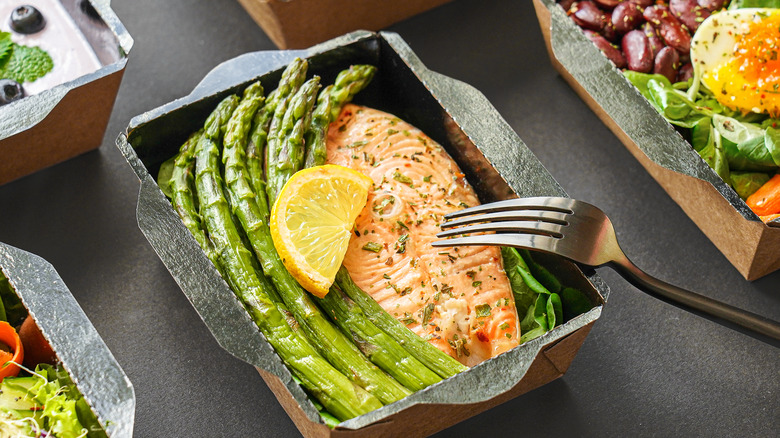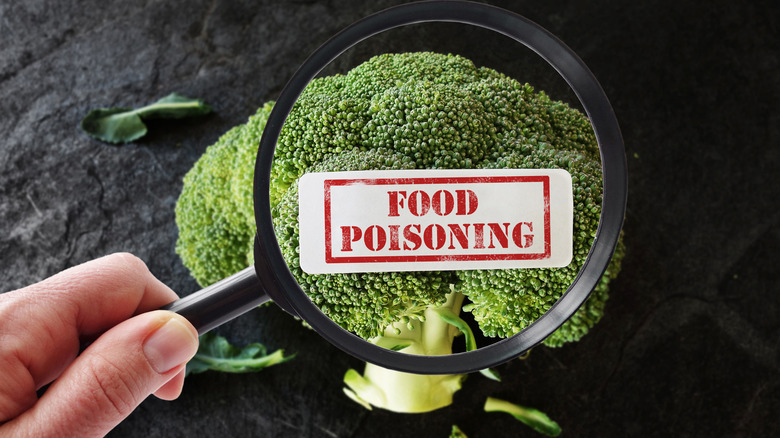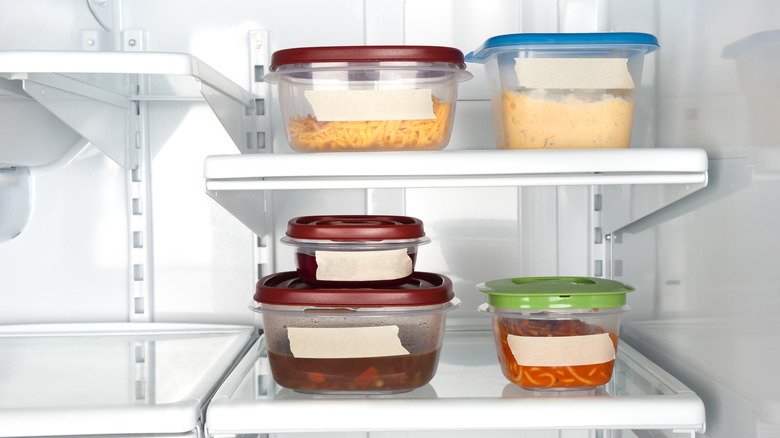How Long Can You Store Cooked Food On The Counter?
Who knew the age-old adminition "eat your food before it gets cold," which many children have no doubt heard from impatient elders, was onto something scientific. Not only does it mean the food might not taste as good, but consuming food that's been sitting out for too long can leave you feeling really sick.
It's an easy risk to take; whether you're leaving a plate in the oven for a spouse or cleaning up after a party you've hosted only to find an abundance of uneaten food, the question of whether left-out food salvageable often comes to mind. The answer depends on how long your food sat out and at what temperature. No one wants to see a delicious meal in the trash, so the U.S. Food and Drug Administration (FDA) has stepped in to inform the public of the exact measures that need to be taken to determine the safety of food that's been left out; thankfully, there's a very clear line. Because let's be honest, who's going to set a timer every time they put food on the table?
The 2-hour rule
According to the FDA's "2-hour rule," you should throw away any perishable foods that have been sitting at room temperature for more than two hours. Foods that have sat at a temperature of 90 degrees Fahrenheit or higher, as may happen while dining buffet-style at an outdoor gathering or after leaving foods in an unpowered oven to keep them "warm," should be discarded after just one hour.
The reason behind all of this is the enormous amounts of bacteria present already in most foods, and how quickly these potentially harmful microorganism populations can grow. The U.S. Department of Agriculture (USDA) explains that a temperature danger zone exists where bacteria grows rapidly on foods: This range falls between 40 degrees Fahrenheit and 140 degrees Fahrenheit. Consuming foods that have lingered in this range can lead to food poisoning with symptoms including fever, diarrhea, vomiting, nausea, stomach cramps, and in rare but severe cases, paralysis, meningitis, and death.
A big misconception is that people can weasel around these rules by reheating their food, but this really depends on the food. The Centers for Disease Control and Prevent (CDC) reveals that a heat-resistant toxin produced by the bacteria Staphylococcus aureus (Staph) is pretty impossible to cook out once it's spread. Staph (and its resultant toxins) is commonly found in meat, cold mayonnaise-based salads, cream-filled pastries, sandwich fillings, and dairy products (via WebMD), limiting the redemption of those last-leg foods.
Food safety for serving and storage
The FoodSafety.gov website provides some helpful tips to ensure you're on your way to success when serving and consuming foods properly. The first step is double-checking that the temperature of your refrigerator is set to 40 degrees Fahrenheit or below and that your freezer is set to 0 degrees Fahrenheit or below. An appliance thermometer can help with this.
Next, when serving a warm or cold meal, here are two hacks to keep them safe for longer: For a warm meal, chafer dishes with fuel underneath can help keep the meal fresh and delicious without tempting it into the danger zone. For a cold salad outdoors, a neat TikTok-inspired trick is to place water into an aluminum pan that is a similar size to the serving dish; just freeze it and stack this homemade icebox underneath the salad to keep it cool longer.
As far as leftovers go, your food should be stored in shallow containers to allow for more efficient cooling and less time in the danger zone. And when it comes time to reheat, it's best to defrost food in the refrigerator for even thawing and to ensure it stays within a safe temperature range (via Fine Cooking). With the right information and these simple steps, you'll be turning last night's dinner into tomorrow's lunch in no time!


